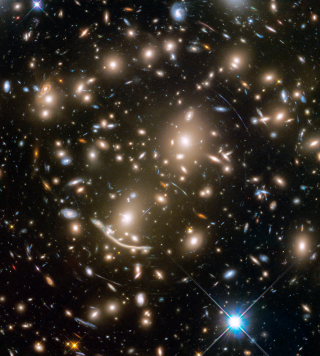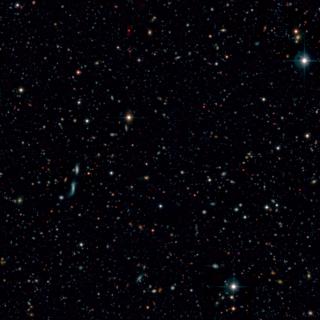Bibcode
López-Sanjuan, C.; Cenarro, A. J.; Varela, J.; Viironen, K.; Molino, A.; Benítez, N.; Arnalte-Mur, P.; Ascaso, B.; Díaz-García, L. A.; Fernández-Soto, A.; Jiménez-Teja, Y.; Márquez, I.; Masegosa, J.; Moles, M.; Pović, M.; Aguerri, J. A. L.; Alfaro, E.; Aparicio-Villegas, T.; Broadhurst, T.; Cabrera-Caño, J.; Castander, F. J.; Cepa, J.; Cerviño, M.; Cristóbal-Hornillos, D.; Del Olmo, A.; González Delgado, R. M.; Husillos, C.; Infante, L.; Martínez, V. J.; Perea, J.; Prada, F.; Quintana, J. M.
Bibliographical reference
Astronomy and Astrophysics, Volume 576, id.A53, 15 pp.
Advertised on:
4
2015
Journal
Citations
43
Refereed citations
40
Description
Aims: Our goal is to develop and test a novel methodology to
compute accurate close-pair fractions with photometric redshifts.
Methods: We improved the currently used methodologies to estimate the
merger fraction fm from photometric redshifts by (i) using
the full probability distribution functions (PDFs) of the sources in
redshift space; (ii) including the variation in the luminosity of the
sources with z in both the sample selection and the luminosity ratio
constrain; and (iii) splitting individual PDFs into red and blue
spectral templates to reliably work with colour selections. We tested
the performance of our new methodology with the PDFs provided by the
ALHAMBRA photometric survey. Results: The merger fractions and
rates from the ALHAMBRA survey agree excellently well with those from
spectroscopic work for both the general population and red and blue
galaxies. With the merger rate of bright (MB ≤ -20-1.1z)
galaxies evolving as (1 + z)n, the power-law index n is
higher for blue galaxies (n = 2.7 ± 0.5) than for red galaxies (n
= 1.3 ± 0.4), confirming previous results. Integrating the merger
rate over cosmic time, we find that the average number of mergers per
galaxy since z = 1 is Nmred = 0.57 ± 0.05
for red galaxies and Nmblue = 0.26 ± 0.02
for blue galaxies. Conclusions: Our new methodology statistically
exploits all the available information provided by photometric redshift
codes and yields accurate measurements of the merger fraction by close
pairs from using photometric redshifts alone. Current and future
photometric surveys will benefit from this new methodology.
Based on observations collected at the German-Spanish Astronomical
Center, Calar Alto, jointly operated by the Max-Planck-Institut für
Astronomie (MPIA) at Heidelberg and the Instituto de Astrofísica
de Andalucía (CSIC).The catalogues, probabilities, and figures of
the ALHAMBRA close pairs detected in Sect. 5.1 are available at http://https://cloud.iaa.csic.es/alhambra/catalogues/ClosePairs
Related projects

Galaxy Evolution in Clusters of Galaxies
Galaxies in the universe can be located in different environments, some of them are isolated or in low density regions and they are usually called field galaxies. The others can be located in galaxy associations, going from loose groups to clusters or even superclusters of galaxies. One of the foremost challenges of the modern Astrophysics is to
Jairo
Méndez Abreu

Evolution of Galaxies
Galaxy evolution is a crucial topic in modern extragalactic astrophysics, linking cosmology to the Local Universe. Their study requires collecting statistically significant samples of galaxies of different luminosities at different distances. It implies the ability to observe faint objects using different techniques, and at different wavelengths
Jorge
Cepa Nogue